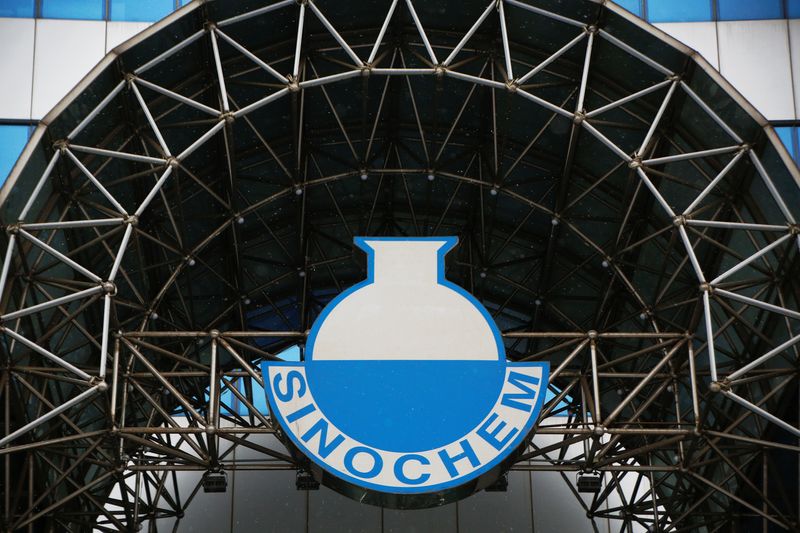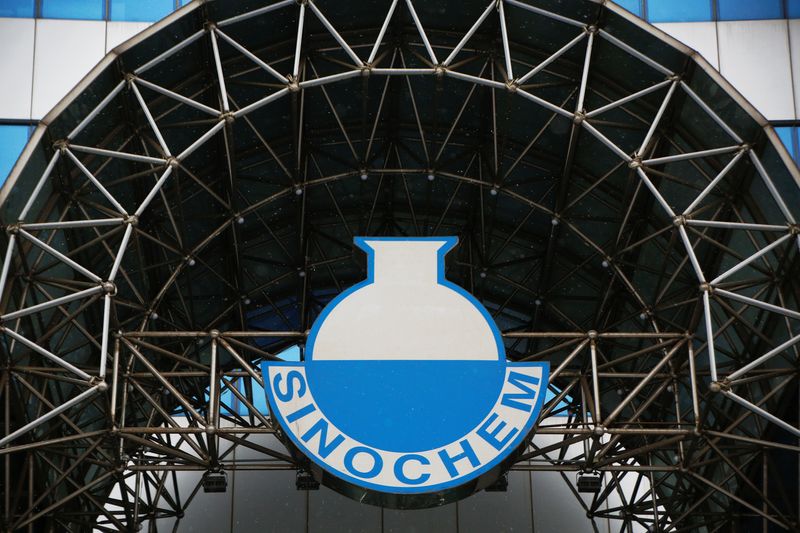Commodities
China Sinochem buys rare Venezuelan oil cargo after U.S. suspends sanctions – sources


© Reuters. A logo of Sinochem is seen outside an office building of Sinochem in Beijing, China, February 21, 2017. REUTERS/Damir Sagolj/Files
By Chen Aizhu and Florence Tan
SINGAPORE (Reuters) – China’s Sinochem Corp has bought a million barrels of Venezuelan for arrival in December, a rare purchase as the state oil and chemicals group capitalises on Washington’s suspension of sanctions on the South American producer.
In mid-October, Washington suspended sanctions on Venezuela’s oil and gas exports for six months, prompting a flurry of spot trades of crude and fuel through Western traders such as Trafigura and Vitol as well as middlemen.
Sinochem has agreed to buy the cargo of heavy Venezuelan Merey crude at a discount of $11 a barrel to dated on a delivered ex-ship (DES) basis, three traders with knowledge of the purchase told Reuters.
The cargo is for delivery to Sinochem’s Changyi refinery in the eastern province of Shandong, one of several it runs in the refining hub after a state-mandated merger with ChemChina.
“(Sinochem) barely touched Venezuelan oil before, although several of its subsidiary plants are configured to process heavy type of crude oil,” said a trader familiar with its Changyi plant, speaking on condition of anonymity.
In a statement, Sinochem’s press office said the company “consistently conducts its operations in strict adherence to legal and regulatory requirements” and does not comment on market speculation.
Before the sanctions easing, Chinese independent refiners were the main customers for Merey crude, taking advantage of steep discounts after previous top buyer PetroChina halted buying from Caracas since late 2019, as the state giant shielded itself from the prospect of secondary sanctions.
Sinochem has long stayed clear of dealing in sanctioned oil, fearful of any adverse impact on its broader business, said senior trading sources familiar with the group’s thinking.
The $11 discount for Sinochem compares with discounts of $20 for sanctions-era Merey trades into China, reflecting tightening supplies due to stagnant domestic production in Venezuela and growing demand from India and the United States.
Under sanctions, Venezuelan crude cargoes to China were typically labelled as being from Malaysia.
Asia-bound shipments of Venezuelan crude and fuel dwindled to about 10 million barrels in November from 16.5 million barrels the previous month amid the relaxation of sanctions, which allows Venezuela to export to any market, according to PDVSA documents and LSEG tanker tracking data.
“With the higher prices, margins are thinning for Chinese independent refiners processing Merey,” said a Shandong-based refinery source.
Commodities
Oil prices rise; U.S. crude inventories plunge, Russia-Ukraine truce eyed
Commodities
India’s Reliance to stop buying Venezuelan oil over US tariffs, sources say
Commodities
Oil prices climb on Venezuela supply worries

 Forex3 years ago
Forex3 years agoForex Today: the dollar is gaining strength amid gloomy sentiment at the start of the Fed’s week

 Forex3 years ago
Forex3 years agoUnbiased review of Pocket Option broker

 Forex3 years ago
Forex3 years agoDollar to pound sterling exchange rate today: Pound plummeted to its lowest since 1985

 Forex3 years ago
Forex3 years agoHow is the Australian dollar doing today?

 Cryptocurrency3 years ago
Cryptocurrency3 years agoWhat happened in the crypto market – current events today

 World3 years ago
World3 years agoWhy are modern video games an art form?

 Commodities3 years ago
Commodities3 years agoCopper continues to fall in price on expectations of lower demand in China

 Economy3 years ago
Economy3 years agoCrude oil tankers double in price due to EU anti-Russian sanctions























